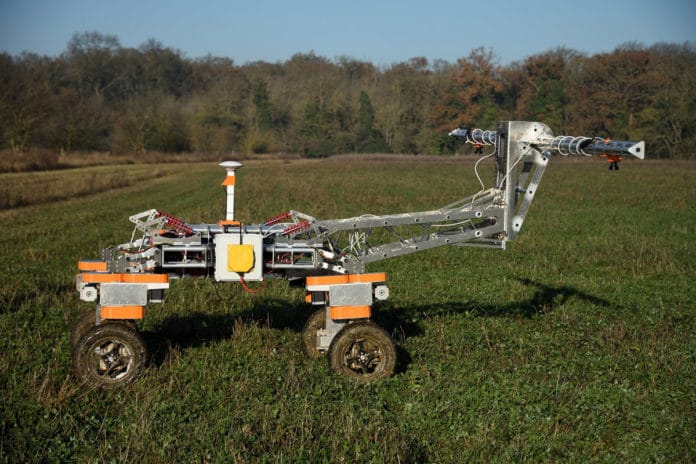Looking for weeds and pests on winter wheat plants and pulling them out of the ground by hand are the things of the past. Weed-killing robots are being introduced at the National Trust estate to identify and dig up unwanted plants without restoring to the use of harmful chemicals.
The Small Robot Company, a British agritech start-up for sustainable farming, has designed three robots that will work as a team to get rid of unwanted plants. The first, a 4-wheeled robot named ‘Tom,’ uses GPS, artificial intelligence (AI), and smartphone technology to create digital maps in the field and identifies unwanted plants. It is already being tested on the field.
The other two AI-controlled robots, Dick and Harry, are still under development. ‘Dick,’ non-chemical weeding robot prototype, is being created to zap individual weeds with an electric charge and artificial intelligence. And its automated fellow robot, Harry, will help farmers with precision planting of new plants. It is hoped that the zapping robot will remove the need to use chemical weed killers.
The battery-powered Tom robot is equipped with two downward-facing cameras to monitor what is in the field, and sensors to detect obstacles as it trundles around. Tom transmits the data that is stitched together into the map by the software. The mapping will allow farmers to apply herbicides solely to areas where there are weeds rather than spraying large areas.
Besides, the weed-mapping robot compacts the soil far less than a traditional tractor, said Callum Weir, farm manager at Wimpole Estate in Cambridgeshire.
“The beauty of the robot (Tom) is that it gives me absolute precision,” he added. “If I were to go and walk a field, I would walk a W shape in a field and be able to see two meters in front of me. This robot can map every centimeter and give me recommendations for different parts of the field.”
The 150kg prototype visits four times per growing season and can map 20 hectares per day. An initial prototype will go into field trials in 2020, with the commercial weed zapping service to be available from autumn 2021.
